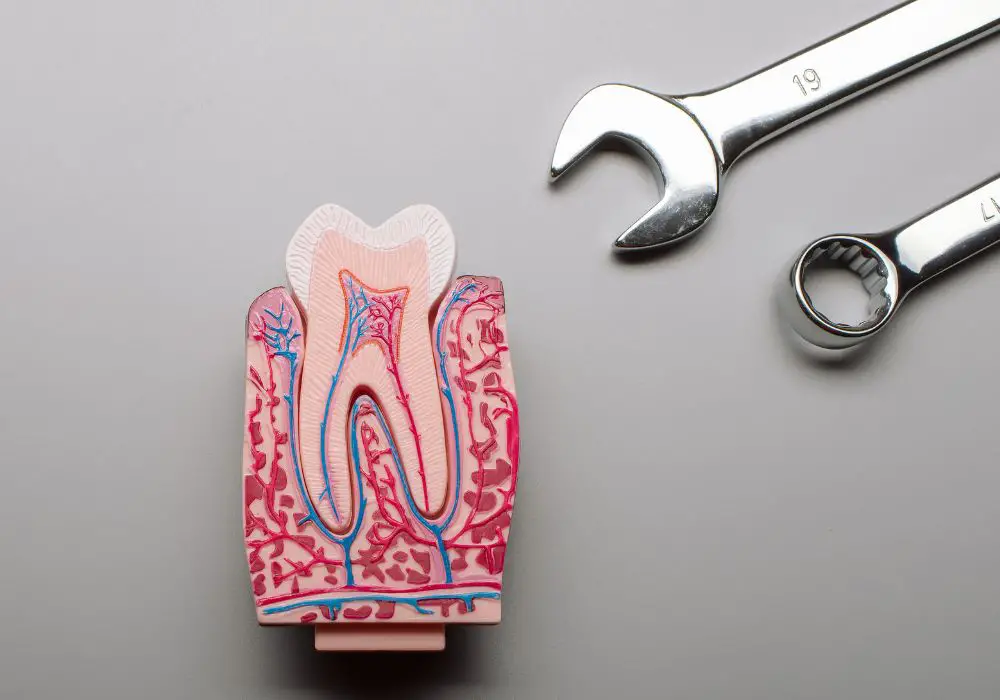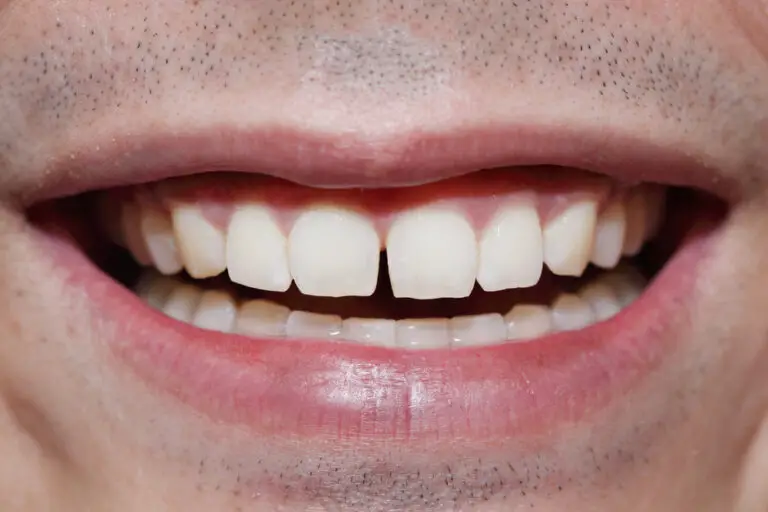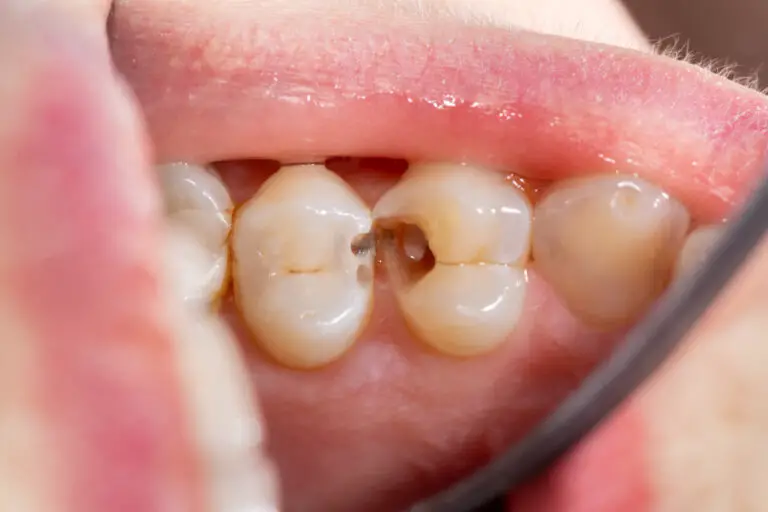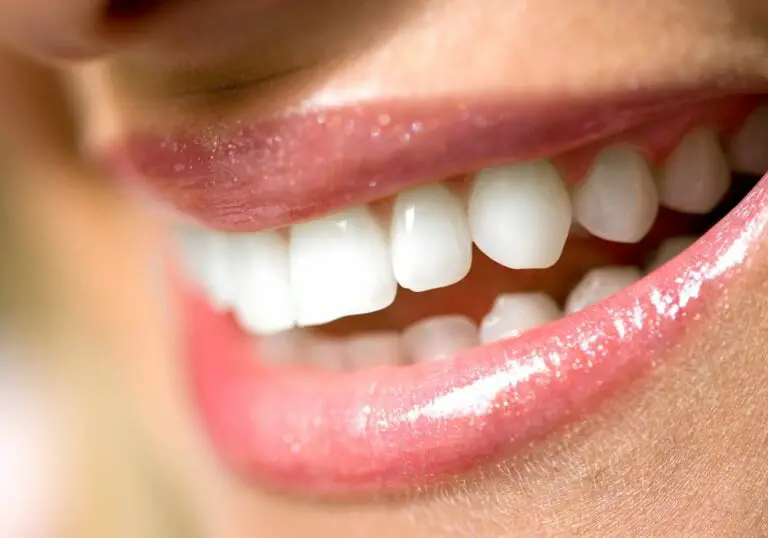Have you ever wondered if a tooth has a vein? It’s a common question that many people have, and the answer is not as straightforward as you might think. While teeth do not have veins in the traditional sense, they do have a complex network of blood vessels and nerves that are essential for their survival.
To understand the blood supply of teeth, it’s important to know that teeth are living structures. They have a soft inner layer called pulp that contains blood vessels, nerves, and connective tissue. The pulp is responsible for nourishing the tooth and keeping it healthy. When a tooth is damaged or infected, the pulp can become inflamed or infected, leading to pain and other symptoms.
While teeth do not have veins, they do have a rich blood supply that is essential for their function. The blood vessels and nerves that supply teeth are located in the pulp, which is the soft inner layer of the tooth. Understanding the blood supply of teeth is important for maintaining good oral health and preventing tooth decay and other dental problems.
Understanding Tooth Anatomy

Tooth Structure
A tooth is a complex structure that consists of several layers. The outermost layer of the tooth is called the enamel, which is the hardest substance in the human body. Beneath the enamel lies the dentin, which is softer than the enamel but harder than the bone. The pulp chamber is located at the center of the tooth and contains the nerves and blood vessels that supply the tooth with nutrients.
The root of the tooth is embedded in the jawbone and is covered by a layer of cementum. The periodontal ligament attaches the cementum to the jawbone and helps to support the tooth.
Tooth Components
Teeth are composed of several components, each with a specific function. These components include:
- Enamel: The outermost layer of the tooth that protects it from wear and tear.
- Dentin: The layer beneath the enamel that provides support to the tooth.
- Pulp: The soft tissue at the center of the tooth that contains nerves and blood vessels.
- Cementum: The layer that covers the root of the tooth and helps to anchor it to the jawbone.
- Periodontal ligament: The ligament that attaches the tooth to the jawbone and helps to support it.
Understanding the anatomy of a tooth is important for maintaining good oral health. By taking care of your teeth and gums, you can prevent tooth decay and other dental problems. Regular dental check-ups and cleanings can also help to keep your teeth healthy and strong.
What is a Vein?
Veins are blood vessels that carry blood from the body’s tissues back to the heart. They are part of the body’s circulatory system, which is responsible for transporting blood, oxygen, and nutrients throughout the body. Veins are different from arteries, which carry blood away from the heart and towards the body’s tissues.
Veins are often located closer to the surface of the skin than arteries, and they can be seen through the skin in some areas of the body. They are typically blue or green in color, which is due to the way that light interacts with the blood inside them. Veins are also thinner and less muscular than arteries, which makes them more flexible and able to expand to accommodate changes in blood flow.
Veins contain valves that help to prevent the backflow of blood as it moves towards the heart. These valves are especially important in the legs, where blood has to fight against gravity to return to the heart. When the valves in veins become damaged or weakened, blood can flow backwards and pool in the veins, leading to conditions like varicose veins.
In summary, veins are an important part of the body’s circulatory system, responsible for carrying blood back to the heart. They are thinner and less muscular than arteries, and contain valves that help to prevent the backflow of blood.
Do Teeth Have Veins?

Teeth are complex structures that are made up of several layers. The outermost layer is called the enamel, which is the hardest substance in the human body. Beneath the enamel is the dentin, which is a softer layer that contains tiny tubes that lead to the pulp. The pulp is the innermost layer of the tooth, which contains blood vessels and nerves.
While teeth do not have veins, they do have a rich blood supply that is provided by arteries. The arteries that supply blood to the teeth are known as the dental arteries. These arteries are branches of the maxillary artery, which is a major artery that supplies blood to the face and head.
The dental arteries enter the tooth through a small opening at the tip of the root. Once inside the tooth, they branch out into smaller vessels, which supply blood to the pulp and other structures within the tooth. The blood supply is important for maintaining the health of the tooth, as it provides oxygen and nutrients to the cells within the tooth.
In addition to the blood supply, teeth also have a rich network of nerves that provide sensation to the tooth. The nerves enter the tooth through small openings in the root and branch out to supply the pulp and other structures within the tooth. These nerves are responsible for transmitting pain signals when the tooth is damaged or injured.
Overall, while teeth do not have veins, they do have a rich blood supply that is provided by arteries. This blood supply is essential for maintaining the health of the tooth, as it provides oxygen and nutrients to the cells within the tooth.
Blood Supply to Teeth
Teeth are an important part of our body, and they require a constant supply of nutrients and oxygen to stay healthy and functional. The blood supply to teeth is responsible for providing these essential elements to maintain their vitality and integrity.
Role of Blood in Teeth
Blood plays a crucial role in the maintenance of teeth. It provides oxygen and nutrients to the cells, which are necessary for their proper functioning. The blood also carries away waste products from the cells, which helps in maintaining their health.
Moreover, the blood supply to teeth is responsible for regulating the temperature of the tooth. Teeth are sensitive to temperature changes, and the blood supply helps in maintaining their temperature within a narrow range, which is essential for their proper functioning.
Blood Vessels in Teeth
The blood vessels in teeth are responsible for supplying blood to the different parts of the tooth. The blood vessels enter the tooth through a small opening at the tip of the root and branch out into smaller vessels that supply blood to the pulp, dentin, and cementum.
The pulp is the innermost part of the tooth, and it contains blood vessels, nerves, and connective tissues. The blood vessels in the pulp are responsible for supplying nutrients and oxygen to the cells and removing waste products.
The dentin is the hard, mineralized tissue that forms the bulk of the tooth. It contains small channels called dentinal tubules that allow the blood vessels to penetrate deep into the tooth.
The cementum is a thin layer of mineralized tissue that covers the root of the tooth. It contains small channels called cemental canaliculi that allow the blood vessels to supply blood to the root of the tooth.
In conclusion, the blood supply to teeth is essential for their proper functioning and maintenance. The blood vessels in teeth are responsible for supplying oxygen and nutrients to the cells, regulating the temperature of the tooth, and removing waste products.
Implications of Veins in Teeth

Veins play an essential role in maintaining the health of your teeth. They carry blood, oxygen, and nutrients to the dental pulp, which is the innermost layer of your teeth. The dental pulp contains nerves, connective tissues, and blood vessels, and it is responsible for keeping your teeth alive and healthy.
Tooth Health
The veins in your teeth are crucial for maintaining their health. If the blood supply to your teeth is disrupted, it can lead to various dental problems, such as tooth decay, gum disease, and tooth loss. Poor oral hygiene, unhealthy eating habits, and smoking can all contribute to the blockage of veins in your teeth, which can lead to serious dental problems.
Dental Procedures
Dental procedures, such as root canals and dental implants, can also affect the veins in your teeth. During a root canal, the dentist removes the infected dental pulp and replaces it with a filling material. If the veins in your teeth are damaged during the procedure, it can lead to tooth loss or other complications.
Similarly, during a dental implant procedure, the dentist places a metal post into your jawbone to replace a missing tooth. If the veins in your jawbone are damaged during the procedure, it can lead to poor blood supply to your teeth, which can cause dental problems.
In conclusion, the veins in your teeth are essential for maintaining their health. It is crucial to take care of your teeth by practicing good oral hygiene, eating a healthy diet, and avoiding smoking. If you require dental procedures, make sure to choose a qualified and experienced dentist to avoid any damage to the veins in your teeth.
Frequently Asked Questions
What is the pulp cavity of a tooth?
The pulp cavity is the innermost part of a tooth that contains the pulp, which is a soft tissue made up of blood vessels, nerves, and connective tissue. The pulp cavity is located in the center of the tooth and extends from the crown to the tip of the root.
What materials cover the tooth root?
The tooth root is covered by cementum, which is a hard, calcified tissue that helps anchor the tooth to the jawbone. The cementum is also covered by the periodontal ligament, which is a thin layer of connective tissue that attaches the tooth to the bone.
What is the anatomy of a tooth?
A tooth is made up of several layers, including the enamel, dentin, pulp, and cementum. The enamel is the hard, outermost layer that covers the crown of the tooth. The dentin is a softer layer that lies beneath the enamel and makes up most of the tooth’s structure. The pulp is located in the center of the tooth and contains blood vessels and nerves. The cementum covers the tooth root and helps anchor the tooth to the jawbone.
What is the function of blood vessels in teeth?
Blood vessels in teeth provide oxygen and nutrients to the pulp, which is essential for the tooth’s health and function. The blood vessels also help remove waste products from the pulp.
What are the nerves in teeth called?
The nerves in teeth are called dental nerves. They are responsible for transmitting signals of pain, pressure, and temperature from the tooth to the brain.
Are there veins in gums?
Yes, there are veins in gums. The gums are rich in blood vessels, including veins, that provide oxygen and nutrients to the gum tissue. The veins also help remove waste products from the gums.







